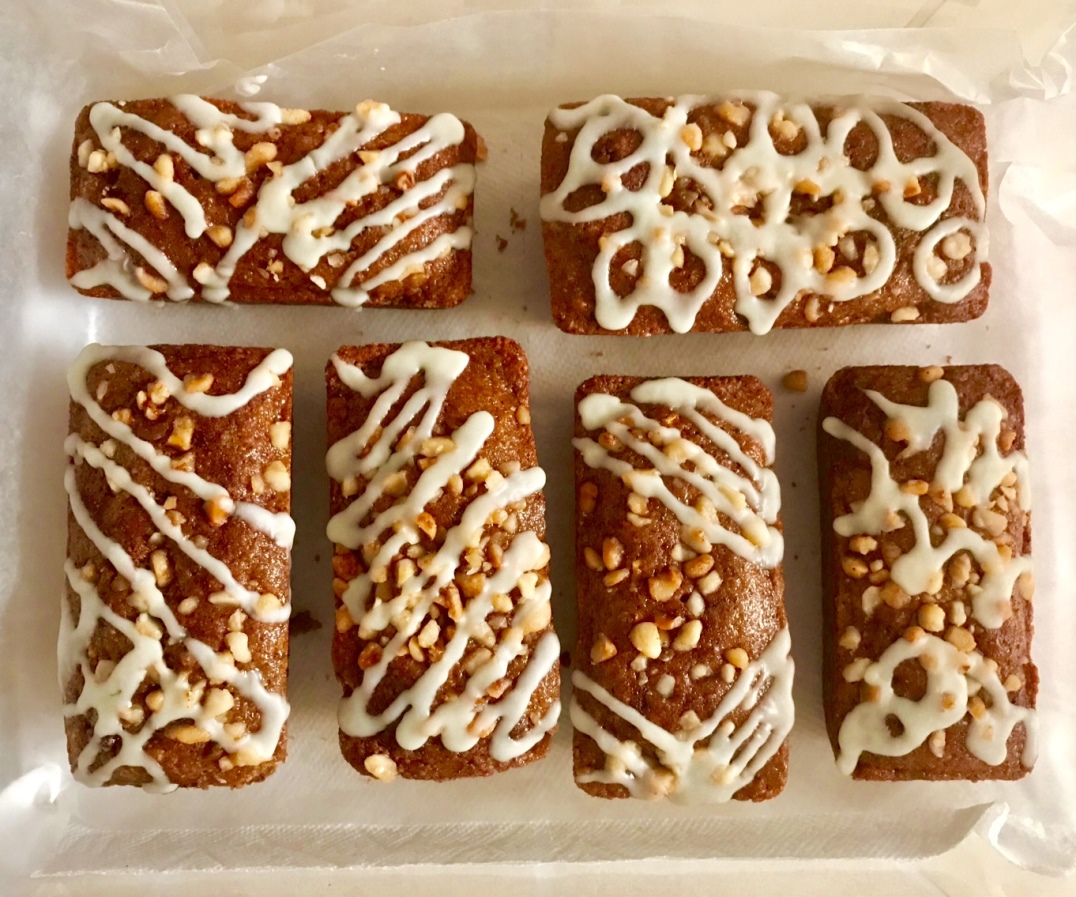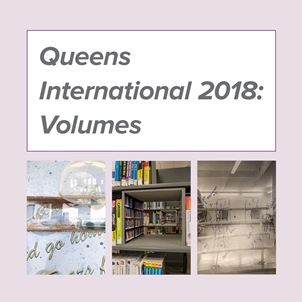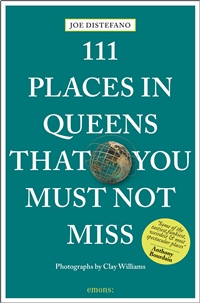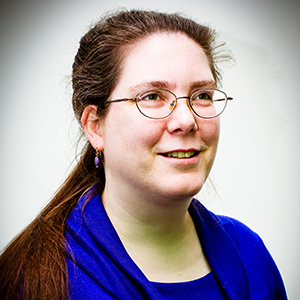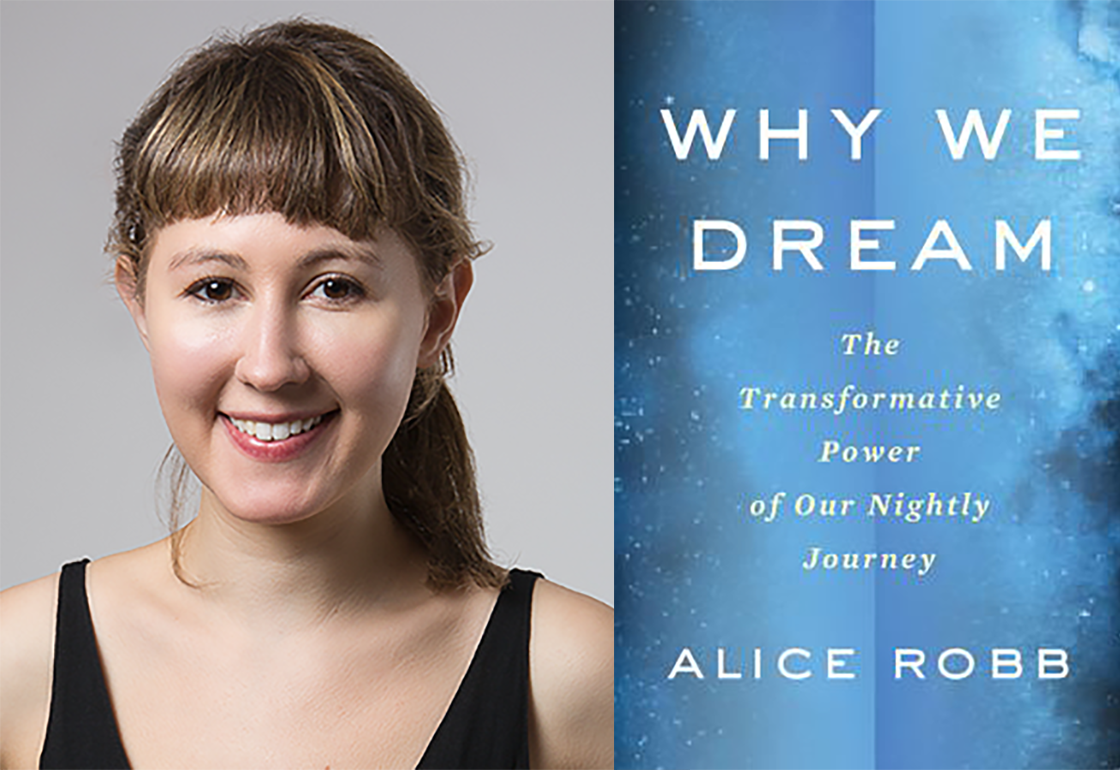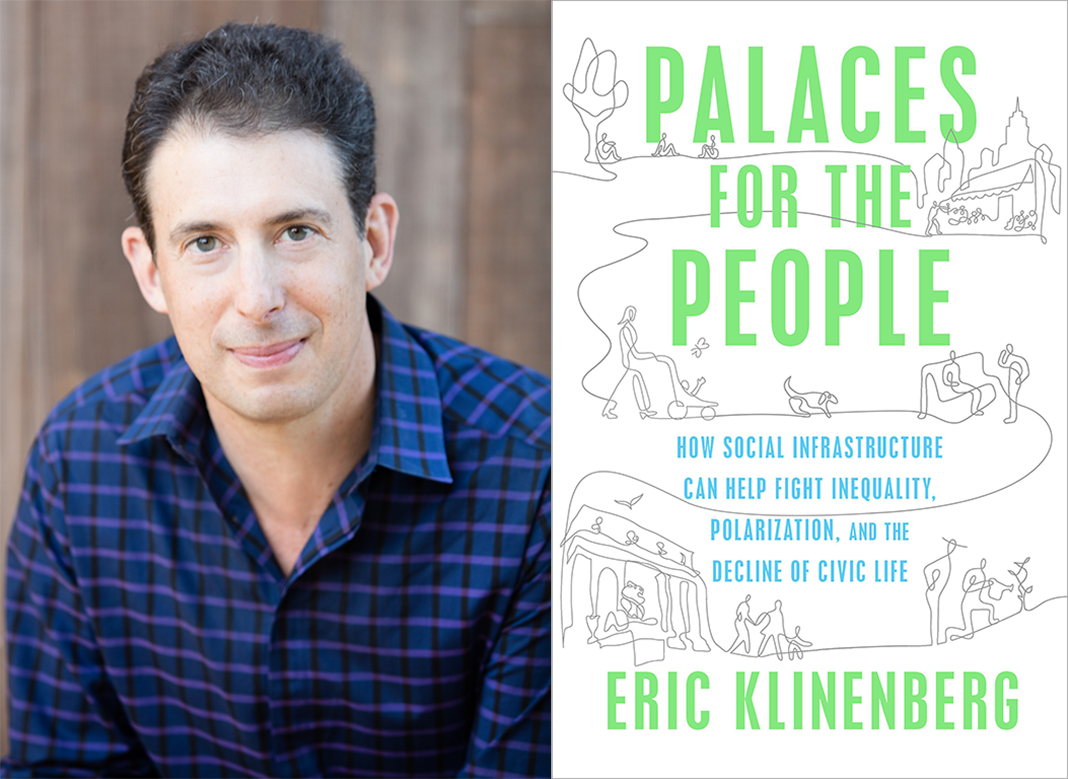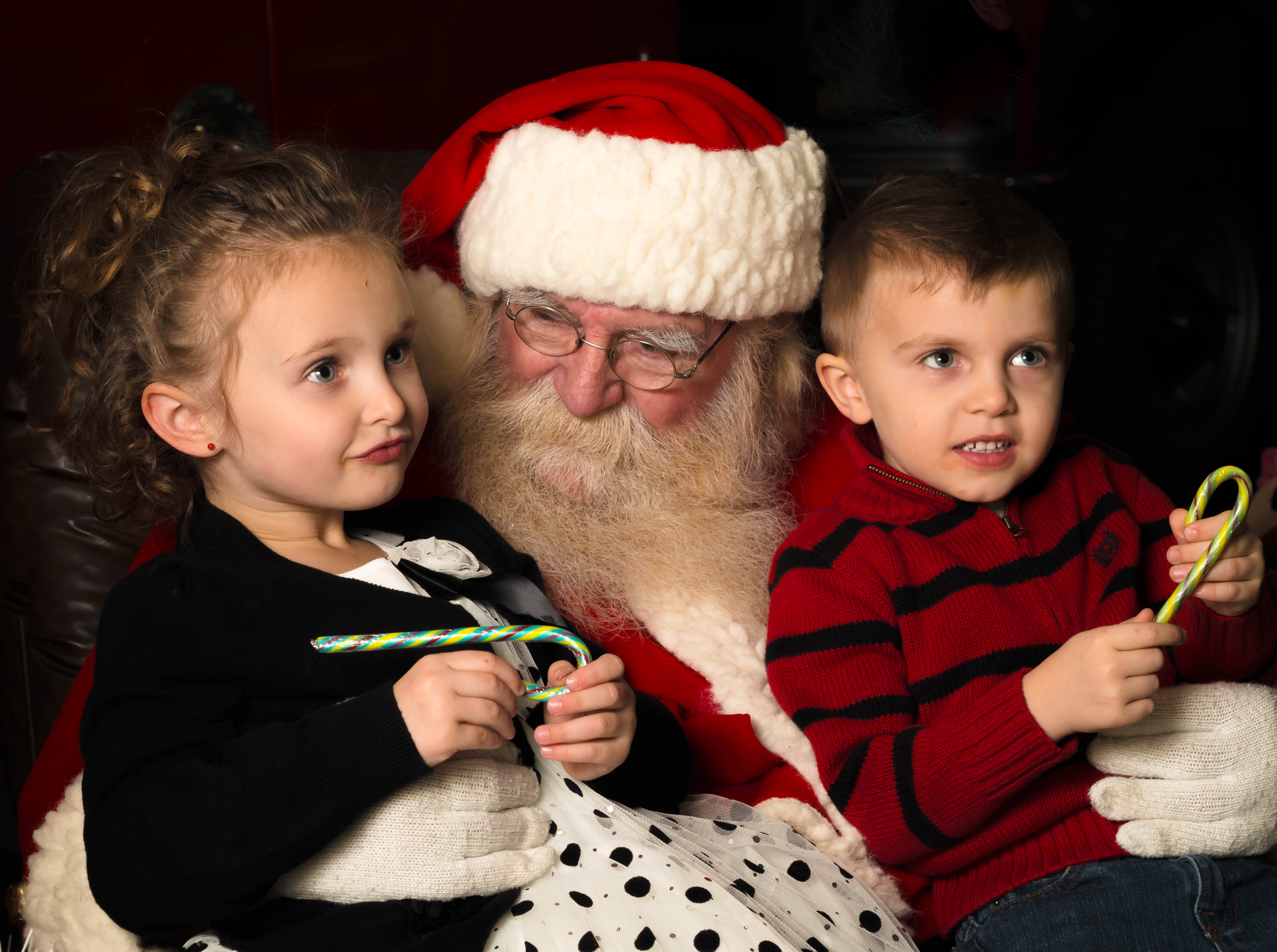Jamaica FEASTS is Queens Library’s FREE training program to provide knowledge, tools, and resources to people who want to start and run their own food businesses in Queens.
Several talented students have graduated from Jamaica FEASTS, and we’re very pleased to share their holiday recipes with you!
Please prepare all recipes at your own discretion; Queens Library is not responsible for accidents, allergic reactions, or illnesses that occur because of preparation.
Pernil (Roast Pork)
from Judy and Keith Cyrus, CaSpanish
“It’s our family tradition to have this roast pork dish for the holidays,” say Judy and Keith, the husband-and-wife duo who created their Bronx-based catering company to serve Spanish food with a Caribbean twist. “It feeds 15 to 20 people, which is always important when you have your whole family coming over for dinner!”
Ingredients
- 1 pork shoulder, 6 to 8 pounds
- 3 packets of Sazón seasoning
- 2 lemons
- 1 tablespoon oregano
- ¾ cup of Recaito (a Puerto Rican green cooking base)
- 2 tablespoons minced garlic
- Olives
- Salt
Directions
- Pre-heat oven to 350 degrees.
- In a small bowl, mix the Sazón, oregano, Recaito, and garlic.
- Squeeze the lemons into the bowl and mix with the other ingredients.
- Place the pork shoulder skin side down in an oven-safe pan. Using a knife, carefully stab holes about an inch deep all over the pork shoulder.
- Pour half the mixture onto the pork. Massage it all over the pork and into the holes.
- Take the olives and place as many as you like into the holes.
- Turn the pork over and massage the remaining mixture into the skin.
- After the pork is seasoned, leave it skin side up and cover with aluminum foil.
- Place the pork in the oven. Cook the pork for 1 hour per pound, and remove the aluminum foil during the last 3 hours of cooking.
- Remove from the oven, carve, and enjoy!
Posts in This Series
Jamaica FEASTS is Queens Library’s FREE training program to provide knowledge, tools, and resources to people who want to start and run their own food businesses in Queens.
Several talented students have graduated from Jamaica FEASTS, and we’re very pleased to share their holiday recipes with you!
Please prepare all recipes at your own discretion; Queens Library is not responsible for accidents, allergic reactions, or illnesses that occur because of preparation.
Nutty Zucchini Raisin Bread
from Tress Walker, MumsKitchens NYC
“This zucchini raisin bread was inspired by one of my Mums,” says Tress, whose sweet treats earned her a spot at the New York City Wine and Food Festival this past October. “She always serves squash or zucchini with every meal. This is a great recipe for the holidays—it’s decadent, but still healthy, and it will bring the whole family to the table.”
Ingredients
- 3 eggs, room temperature
- ½ cup applesauce
- 4 teaspoons vanilla extract
- 2¼ cups sugar
- ½ cup oil
- 3½ cups flour
- 1 teaspoon salt
- 1 teaspoon baking soda
- 3 teaspoons baking powder
- 1 teaspoon nutmeg
- 4 teaspoons ground cinnamon
- 1 cup raisins
- 1 cup chopped pecans or walnuts
- 3½ cups shredded zucchini
Directions
- Beat eggs, applesauce, vanilla extract, sugar, and oil together, using a standing mixer if you have one. Mix well.
- Preheat oven to 350 degrees. Generously butter and lightly flour two 8”x4” loaf pans.
- In a medium bowl, sift together dry ingredients: flour, salt, baking soda, baking powder, nutmeg, and cinnamon. Stir gently to combine.
- Shred zucchini, lightly packing it down as you measure it.
- Slowly add the dry ingredients (about ⅓ at a time) to your batter, mixing as you go, and then beat well to fully combine.
- With a rubber scraper or wooden spoon, stir the shredded zucchini, nuts, and raisins into the batter and mix well.
- Pour the batter into each prepared pan.
- Bake for 45 to 60 minutes or until a toothpick inserted into the center of the loaf comes out cleanly. (The bake time will vary depending on how much shredded zucchini you add to the batter.)
- Remove from the pans and let cool (on wire racks if you have them).
- For the topping, you can use a cream cheese icing recipe.
Posts in This Series
Since it began in 2002, the Queens Museum’s Queens International has highlighted the artistic production of Queens in a major group exhibition approximately every two years. Queens International 2018: Volumes (QI 2018) opened at the Queens Museum on October 7 and runs until February 24.
On November 10, QI 2018 will extend offsite, with art installations in three Queens Library branches: Lefrak City, Flushing, and Central.
In the Lefrak City branch, former Queens Poet Laureate Paolo Javier and musician David Mason present Fel Santos: I of Newtown, a multimedia installation spanning film, video, sound poetry, and music that explores the elusive identity of Woodside poet Fel Santos. Expanding the practice of sound poetry, Fel Santos’ work draws from his immigrant Filipinx history, encounters with the occult, and his mother’s own private language. Through this project, Javier and Mason share the intimacy and innovation of language and communication that is unique to multilingual speakers and postcolonial cultures. The project will run from November 10, 2018 - February 24, 2019 and will begin with public programs at the Lefrak City branch and the Queens Museum.
Mo Kong’s installation in the Flushing branch investigates the designation of the “American” honeybee—which actually originates from Italy—to address issues of migration that affect current international political relations and communities around Queens. Kong, who was born in ShanXi, China, researched the migration patterns of bees and the business of importing and branding Chinese honey in the United States. Kong uses imagery from his research process to explore ideas of community, selfhood, and belonging. The project will run from November 10, 2018 - December 8, 2018 and will be accompanied by workshops at the Flushing branch.
After months of observing the activity of the Central branch, Jackson Heights-based artist Patrick Killoran has developed a project that focuses on the library as a place where social interaction produces knowledge and where the idea of “searching” is embodied. In this spirit, Killoran invites visitors and library users for an experience of discovery and inquiry. The installation is represented as one thing and upon closer inspection is revealed to be something else. By intervening in the space of the library in an unexpected way, the artist aims to expand the already broad scope of creative and intellectual exchange that happens within its walls. The project will run from November 10, 2018 - February 24, 2019 and will start with public programs at the Central branch.
At each location, The People’s Guide to the Queens International—a project by Jackson Heights-based art critic Brian Droitcour and Astoria-based artist Christine Wong Yap—will invite museum visitors and library users to share their responses to QI 2018. Visitors to the exhibition, including the Queens Library installations, can submit their responses through forms at each site and online or participate in one of seven writing workshops facilitated by The People’s Guide. The project is aimed at fostering an atmosphere of generosity, inclusivity, and lively dialogue, with the responses becoming part of the exhibition itself. Forms will be available for the duration of each installation, and writing sessions will be held on November 10 (Lefrak City), December 1 (Flushing), and January 12 (Central).
Learn more about our Nov. 10th Opening Day Events.
This is just one of the great stories you can read in the November/December 2018 issue of Queens Library Magazine. Other articles you may find interesting:
As the temperatures drop in New York City, it’s important to focus on health and safety when braving the cold this season.
Dr. David Slotwiner, chief of Cardiology, and Dr. Jeffrey Rosen, chairman, Department of Orthopedics and Rehabilitation, and their fellow physicians from NewYork-Presbyterian Queens offer the following tips to help local residents stay healthy and avoid injury during the winter months.
Heart Health
- Go easy on the shoveling. After a snowstorm, shovel slowly and take frequent breaks. The act of lifting heavy snow can raise your blood pressure. Try using a small shovel to lighten the load and the strain on your heart. If you have had a heart attack in the past or other heart problems, you should avoid shoveling.
- Learn the signs of a heart attack. Chest or upper body pain, shortness of breath, cold sweat, nausea/vomiting, and back or jaw pain may all be symptoms of a heart attack. When in doubt, call 9-1-1 and describe your symptoms.
- Avoid heavy meals and alcohol before or after shoveling. Eating a large meal can put added burden on your heart. Alcohol can stimulate the feeling of warmth and you may not be able to properly judge if the cold weather is impacting your body temperature, putting you at risk for hypothermia.
- Prevent hypothermia. Hypothermia is the leading contributor to death by heart failure. To prevent hypothermia, dress for the cold weather. Wear warm layers of quick-dry synthetic material and wear a hat to trap your body’s heat.
- Maintain a heart-healthy diet. During the winter, it’s easy to eat loads of heavy food to stay warm. Instead, wear warm layers and remember to control your portion size, eat fruits and vegetables, and select whole grains.
- Get a flu shot. The flu causes inflammation which can increase your chances of a heart attack. A flu shot is recommended for all ages, but especially for folks 65 and older, those at high risk for the flu, or people who suffer from cardiovascular disease.
Avoid Slips and Trips
- Stock up on salt. Clear snow and ice from your driveway and the sidewalks around your home or business. Use salt before and after a snowstorm to protect yourself and others from slipping.
- Don’t rush. Take extra time and shorter steps in slippery conditions. Try pointing your toes slightly outward when you walk to maintain your balance.
- Stay warm. Before you go outside, wear layers to keep your muscles warm and relaxed. Tense muscles can make it more difficult to maintain your balance.
- Avoid carrying items. Keep hands empty so that arms are free to move for stabilization. If you need to carry something, use a backpack.
- Exercise caution getting in and out of a car. Put both feet on the ground and make sure your footing is stable before you stand up. Ask a friend or family member to help you balance if necessary.
NewYork-Presbyterian Queens, located in Flushing, New York, is a community teaching hospital affiliated with Weill Cornell Medicine, serving Queens and metro New York residents. The 535-bed tertiary care facility provides services in 14 clinical departments and numerous subspecialties. Annually, 15,000 surgeries and 4,000 infant deliveries are performed at NewYork-Presbyterian Queens. With its network of affiliated primary and multispecialty care physician practices and community-based health centers, the hospital provides approximately 162,000 ambulatory care visits and 124,000 emergency service visits annually. For more information, visit nyp.org/queens.
This is just one of the great stories you can read in the November/December 2018 issue of Queens Library Magazine. Pick it up at your local library, or read it online!
We asked Joe DiStefano, author of 111 Places in Queens That You Must Not Miss, to share his favorite locations in Queens that embody the spirit of the holidays. Be sure to visit them, bring your friends and family, and enjoy some holiday cheer!
Diwali at Gurdwara Sahib
This Sikh religious and community center, which offers free vegetarian meals throughout the year, always reflects the values of giving and openness. It is especially festive during Diwali, the festival of light, which takes place on November 7th. At that time of year, oil lamps, or deepas, shine through the wintry evening. 95-30 118th Street, South Richmond Hill
Gottscheer Hall
Thanks to a great lineup of brews and a menu full of hearty wursts, potato pancakes, and pretzels as big as your face, every day feels like Oktoberfest at this German watering hole, set amid a tree-lined block christened Gottscheer Avenue. The one-time social hall still hosts events like the Cozy Corner Fishing Club Spring Dinner Dance. These days, it is also home to Gott Market, a monthly craft bazaar, where local artists sell their wares. 657 Fairview Avenue, Ridgewood
Flushing Free Synagogue
Built in 1926, the Flushing Free Synagogue’s entrance stands atop a staircase flanked by bronze menorahs that have taken on a green patina. Four columns support an architrave inscribed: “For mine house shall be called a house of prayer for all people.” Above the central double doors is a stained glass Star of David and in stone the words “Free Synagogue of Flushing.” The doorway is crowned by a semicircle engraved with the Tablets of The Law, more commonly known as the Ten Commandments. The sanctuary is topped off by a huge stained glass dome in the pattern of the Star of David, an extravagant blend of Judaica and Georgian neoclassicism. All are welcome during Friday evening Shabbat at 7:15pm, and the synagogue is a wonderful place to observe Hanukkah. 41-60 Kissena Boulevard, Flushing
Vander Ende-Onderdonk House
Built in 1709, New York City’s oldest Dutch Colonial stone house is especially scenic during the fall and winter holidays. Don’t miss St. Nicholas Day on December 4. During the Dutch Christmas celebration, St. Nicholas, outfitted with a miter and staff, hands out gifts to children. The house is bathed in candlelight and holds a yuletide feast at night. 18-20 Flushing Avenue, Ridgewood
Old Quaker Meeting House
Downtown Flushing is a hive of modern commerce. However, just east of Main Street is a site steeped in history, quietude, and spirituality— the Old Quaker Meeting House. Built in 1694, the American Colonial edifice sits with its back to the roaring traffic. You wouldn’t know the rough-hewn structure was a house of worship, were it not for a sign that reads, “Friends Meeting. Silent Worship. Sundays 11 AM. All welcome,” with translations in Korean, Chinese, and Spanish. Take in a Sunday meeting and stick around for the tour of the house and graveyard, which takes place at noon. 137-16 Northern Boulevard, Flushing
This is just one of the great stories you can read in the November/December 2018 issue of Queens Library Magazine. Other articles you may find interesting:
- The Birthplace of Santa from Richard Panchyk, author of Hidden History of Queens
Genevieve Cogman is a British fantasy writer whose fifth book in the Invisible Library series comes to Queens Library when it’s published this November. Cogman told Queens Library Magazine about how the rules of the library in her books were established, her writing process, influences, and more.
She says she established the rules of the place known as the Invisible Library as she wrote the first book. The library keeps the balance—the heroine, Irene, is a librarian who travels between worlds to steal books and bring them back to the library. Cogman admits some of the rules came about to prevent Irene from resolving things too easily.
As a writer, she has evolved to do more plotting and structure in advance than she used to, but she still finds that good ideas emerge as she is writing, and she has to go back and fold them in so that it looks as if they were always part of the story. Cogman quotes Lois McMaster Bujold, who said, “The author always reserves the right to have a Better Idea.” As a child, “I was always visiting the library and I always had a pile of books I’d borrowed in my bedroom.” She explains that she mostly read fiction, even as an undergraduate student who got library cards from multiple local libraries—“It was stories that I wanted.” Her tastes in nonfiction as a child ranged from Gilbert and Sullivan and famous murder stories to the history of witch hunts and voodoo.
Today, Cogman finds the Internet convenient to do research or order books for her own permanent collection, but she finds that her local library “is still a useful place to go if I’m looking for general background material on a particular topic—and it’s still a lovely building and an excellent library.”
She finds inspiration in authors who tell stories that she enjoys reading, which is a goal of her own for the stories she writes—that people will enjoy reading them. Some contemporary authors she admires include Lois McMaster Bujold, Barbara Hambly, Max Gladstone, N.K. Jemisin, Charles Stross, and Melissa Scott. She has “been a lover of fantasy and science fiction ever since I first discovered them, and I suppose I write what I love. I admire a lot of writing set in the ‘real’ world, but when I read, I look for stories that involve something else.” Other genres she enjoys include detective fiction, historical fiction, and even some spy fiction, all of which she says have found their way into her Invisible Library series.
Cogman has always loved reading. “It’s always been my main interest, my escape, my way of understanding the world around me, my way of getting a new perspective on things. I was the sort of child who’d go round to visit friends and then spend the time going through their bookshelves...I couldn’t do without it. I need that window on other worlds.”
The author believes that stories don’t necessarily teach lessons, but notes that “sometimes we work out what we do believe in by establishing what we disagree with”—and cites one of Terry Pratchett’s characters as saying, “He does not require that we think of Him, only that we think.”
Her favorite books often cause her to think about things that she hadn’t even considered until the book made her think about them. One of her favorite moments in Bujold’s book Memory “is when the protagonist is offered everything that he thinks he wants, and is forced to confront the price of accepting it. And it’s not an easy choice.” She advocates that everyone read what appeals to them, saying, “Have no shame. Don’t be embarrassed. Read what you want. It’s all reading...Reading is a window on somewhere else. Find the window that you enjoy. Don’t feel obliged to force yourself to read something you really don’t enjoy.” As an example, she confesses she’s never managed to finish Frankenstein. What she does like includes “patchwork and Tolkien and Sherlock Holmes and the Takarazuka Revue.”
“Everyone has different tastes, different hobbies, and different things they love. We get far more out of life by sharing the things we love with friends who love them as well, and being accepting and tolerant of other people’s tastes where we disagree with them—just as we hope they will also accept and tolerate our own weird enthusiasms. The world is wide enough for us all.”
This is just one of the great stories you can read in the November/December 2018 issue of Queens Library Magazine. Other articles you may find interesting:
Christina Matula came to the library this fall to share her first picture book about the Chinese Mid-Autumn Festival, The Shadow in the Moon.
Matula grew up celebrating the festival and eating mooncakes, but not knowing about the legend of Hou Yi and Chang’e.
“Mooncakes were just these yummy red bean-filled cakes that my mom would bring home from Chinatown in the fall and I didn’t really think more about it. It was only when we moved to Hong Kong over a decade ago that my daughter recounted the legend behind the festival that she had heard at school.”
Upon being unable to find a picture book about it, Matula decided to write one herself. While she first intended the book to be just for her own family, she realized that sharing it might spark young children’s interest in Chinese culture. For Matula, this legend was the beginning of her own fascination with Chinese mythology and her exploration of her heritage.
Librarians played a helpful role as she researched different versions of the legend; in one version Hou Yi is mean and greedy, so Chang’e steals the potion to keep it from him. In another, Chang’e is greedy and wants the potion’s power for herself. Matula says, “it was important to write a version where Chang’e was just as brave and heroic as Hou Yi. Mid-Autumn Festival remains my favorite festival. Its simple premise of reuniting with family and giving thanks for what we have has parallels in so many cultures.”
Libraries were important community spaces during her childhood. “Growing up, libraries were not only a place for research and reliable information, but they were also a place where friends, family, and the community gathered. They also allowed me to explore books that I could read for pleasure, outside of assigned school reading.”
Now, libraries help her thrive and grow as a writer. “Libraries, with their wealth of titles in all genres, continue to increase my love of reading, which has evolved to include a love of writing. Librarians have been vital to my research, constantly recommending authors and books, new and old alike. Libraries, now more than ever, are an important community resource for all aspects of life. Not only are the library employees trusted members of the community, but also libraries themselves provide a place for family bonding over quality books, with no socioeconomic barriers. I am delighted that libraries remain as important to my children as they were to me.”
Matula sought inspiration from both ancient and modern times while working on her book, citing Grace Lin’s Thanking the Moon and Where The Mountain Meets the Moon as well as Loretta Seto’s Mooncakes as influential during her process. She describes growing up reading fairy tales, especially Hans Christian Andersen. Another early and formative read was a collection of biblical graphic novels given to her by her mother. “I was fascinated by the far-off places and their archetypal stories of the hero’s journey, where there was hardship that was overcome due to perseverance, with some accompanying truths and lessons.”
She’s currently working on stories about little-known Chinese legends that she hopes will be in a series with The Shadow in the Moon. “Legends are a vital thread to our past and give us an insight into what people used to believe and how they lived. It’s amazing to see the similarities between legends across different cultures. They can also give you a greater appreciation of your own heritage.”
“For those readers with Chinese roots, I want to share that fascinating legend that makes the Mid-Autumn Festival so special. But for any reader, I hope they will not only be drawn into the charming tale, but also in observing their own parallels with the religious and cultural festivals that their families celebrate.” Matula was able to choose the illustrator of her book and describes immediately loving Pearl Law’s style. “As she grew up in Hong Kong, she was able to add in brilliant little touches to the illustrations that only someone with that background and heritage could.”
Reading plays an important role in Matula’s life. “Reading is an escape from everyday stresses, transporting me to another time or place. Discovering books in other genres helps me improve my writing and inspires me to explore different avenues in the future. For younger readers, I believe nurturing a love of reading will develop into a love of learning.”
Her advice to readers? “Don’t be afraid to embrace your heritage and be curious about your background. Read stories written by or about someone from a different culture. It can give you valuable insight into how, despite our seemingly huge differences, we are all so similar.”
This is just one of the great stories you can read in the November/December 2018 issue of Queens Library Magazine. Other articles you may find interesting:
Alice Robb has always been curious about her own dreams—which she says “have been very vivid for as long as I can remember."
Her new book, Why We Dream: The Transformative Power of Our Nightly Journey, is a fresh approach to explain how dreams work, what dreams are for, and how dreams can help us in our waking lives.
She wrote most of her new book in a public library, noting that “there’s something very inspiring about being surrounded by books that have actually been published when finishing your own feels far away.” It took Robb about three years to finish the book—enough time to “read around the topic, fall down rabbit holes, try things out and throw them away.”
Robb was accustomed to working on articles, which required more focus and rarely took more than a month. In 2011, she read the book Exploring the World of Lucid Dreaming by lucid dream pioneer Stephen LaBerge, and used his techniques to induce lucid dreams. The first step toward lucid dreaming, she says, is to keep a dream journal and remind yourself before bed that you want to remember your dreams. LaBerge suggests you ask yourself throughout the day whether you’re awake or asleep as a means of testing your reality.
In 2014, she had a nightmare that led her to start researching the meaning of dreams and why we have them. Unlike most books on dreams that are narrowly focused — for example, on “neuroscience of dreams, dreams in literature or psychoanalysis, the dreams of Civil War soldiers or Holocaust survivors”—Robb wanted her book to explain the current scientific theories of dreams while also incorporating culture and history.
Robb says that we dream every night, even when we don’t remember our dreams, and that it’s easy for most people to remember more of their dreams. “Dreaming,” she says, “helps us form memories, solve problems, work through our anxieties, and maintain our mental health.”
In writing her book, she was helped by some science books and memoirs to determine the tone and style she wanted to convey to readers. These include David J. Morris’s The Evil Hours, about the history of post-traumatic stress disorder, which “was a model for blending empathetic science writing with a personal arc,” Emily Witt’s Future Sex, and Olivia Laing’s The Lonely City. The latter two were helpful for thinking about how to combine history, reporting, and memoir.
Reading has always been embedded in Robb’s life—she reads to learn, to escape, and to relax. “I feel extremely lucky to be able to consider reading a part of my job,” Robb says. She believes that reluctant readers just haven’t found what they like to read yet— and encourages them to let go of whatever ideas they have about what they are “supposed” to read and look for what engages them.
As for herself, Robb has a lengthy list of favorite contemporary writers, including Elena Ferrante, Tessa Hadley, Rachel Cusk, Mary Gaitskill, Emmanuel Carrere, Jenny Diski, Asne Seierstad, Barbara Demick, Vivian Gornick, and Larissa MacFarquhar.
She’s now enjoying working on a few articles, which are more finite than a book, including one about a scandal in the Charleston ballet world. To readers, Robb advises, “Keep a dream journal. Even if the habit doesn’t stick, it’s worthwhile to have spent a little time thinking about what’s going on in your head every night.”
This is just one of the great stories you can read in the November/December 2018 issue of Queens Library Magazine. Other articles you may find interesting:
Eric Klinenberg, author of the new book Palaces for The People, advocates for libraries as part of social infrastructure that promotes interactions between people from all walks of life.
But he says he was a latecomer to public libraries, since he grew up in Chicago in the 1970s when the libraries were in bad shape. The earliest library he used was the wonderful one at his school, where he spent countless hours doing homework and reading books about sports. Klinenberg reports that Chicago’s libraries “are now much better. The city leadership recognizes what a vital role branch libraries can play in neighborhoods, and while they don’t have all the resources they need, they’re much better than they were when I was a kid.”
His relationship with libraries has changed, too, as they are now essential in his life as a scholar and writer. “I became a scholar because I learned to love libraries,” Klinenberg says, citing the main library at Brown University and the Harold Washington Library in Chicago where he worked on his first book about a catastrophic heat wave. While working on Palaces for the People, he spent nearly every day in a branch library, most frequently in the Seward Park Library on the Lower East Side. “I got to know a bunch of urban libraries, including the Queens Library. Talk about a ‘palace!’”
He selected the Lower East Side’s library for his book as he wanted to “focus on a library that serves a diverse community, including a lot of immigrants, and I wanted to observe a neighborhood that is transforming.” The Lower East Side had all of that and the benefit of being within walking distance of his office at New York University, where he teaches. East New York, also studied in the book, “was a longer commute. But I wanted to see the Library Lanes program in action and the team there is amazing.”
He came to know the Queens Library system through an invitation from Julie Sandorf, the president of the Charles H. Revson Foundation, who he describes as one of the city’s greatest advocates for libraries. “One day she asked me if I wanted to see the most dynamic, multilingual, buzzing library in the country. Of course I said yes. The next thing I knew we were touring Queens Library. I even took an extended video of a walk through the stacks of foreign-language books. It’s a long one, as you can imagine.”
Klinenberg praises the diverse use of libraries and their different roles for different community members: “Libraries do so many things. They’re necessary for older people looking for companions, especially those who live alone. They are so important to young children, not only because they teach early literacy but also because they expose them to different languages and people from all walks of life. They’re vital for mothers and caretakers, who establish bonds of solidarity and mutual support that make looking after infants so much less stressful. They’re havens for teenagers, who in the library find a place to study, play video games, and be with each other, rather than being out in the streets. In disasters, like Hurricane Sandy, libraries are lifelines. They provide all kinds of relief, from WiFi to warm meals and companionship. We’re so much better off because we have them in our neighborhoods.”
His greatest hope for the book is that it will help people see and understand what he calls “social infrastructure”—the places and organizations that shape our interactions. He also wants readers to “know that we can, collectively, demand that our government provide all of us with the kinds of shared spaces and public goods that make life better—not just libraries but also parks, playgrounds, schools, and good transit. All of us deserve palaces, not just the most elite and affluent. New York City was built on that vision, but in recent decades we’ve let it slip away.”
Klinenberg is a voracious reader who uses reading for many purposes; “Reading is how I learn—about the world, about history, about people who are like and unlike myself. Reading is how I entertain myself. It’s how I initiate my civic engagement. It’s how I figure out who I am and what I want to be. It’s how I find out who won the Cubs game last night, too.” He encourages others to read because “it makes the world bigger, more interesting, and more meaningful; it makes your mind sharper and more powerful, too.”
Klinenberg’s research about libraries surprised him, especially the fact “that so many people are using them, for so many different reasons, in every part of our city. Honestly, I had no idea how active and busy they are. I don’t think our political leaders do, either. That’s actually one more thing I hope my book does: give every political official new reasons to support our libraries, at far greater levels than they do today.” He notes that, “In literally every branch library I visited, I saw people engaging each other in ways that still inspire me. It’s a dark time for democracy in America, but in libraries, I find reason for hope.”
He advocates for more funding for libraries, saying, “They need a massive injection of capital to meet the needs of contemporary patrons. Every branch is different, but too many need renovations in too many places, from the bathroom to the computer room and down to the systems for air conditioning and heating. What every branch shares, though, is the need for more hours of open operation. All of our libraries should be open seven days a week, not five or six, and they should stay open until late in the evening, so everyone, including people with day jobs, can use them.”
His advice for readers? “The next time you enter your library, stop for a moment and check out all the people who are using it, for all kinds of reasons, each in her own way. Pause and consider where they would be—where you would be—if we didn’t have our libraries. And remember that next time there’s an election. Make sure libraries get the love and support they need.”
Photo of Eric Klinenberg by Lisa DeNeffe.
We asked Richard Panchyk, author of Hidden History of Queens, to tell us about one of Queens’ historic holiday places—and its connection to one of the most famous poems ever written!
Queens is home to a spot that is likely to have inspired nothing less than the modern version of the secular side of Christmas as we know it—with its vision of a jolly round Santa Claus in a sled pulled by reindeer.
Though Clement Clarke Moore, author of the famous poem “A Visit from St. Nicholas” (more commonly known as "The Night Before Christmas"), was born in Manhattan, his father was an Elmhurst native. In fact, the Moore family had roots in Queens since the mid-17th century.
Moore’s dad, Bishop Benjamin Moore, moved to New York City and raised a family there, but his grandparents remained in Elmhurst. It is thus highly likely that young Clement would have visited grandma and grandpa Moore at the old family home in Queens.
Contrary to what has become local legend over the years, the old family home was not the one that stood at 45th Avenue and Broadway, where Moore Homestead Playground is today. Like most ancient families, the Moores grew in number with each generation, and thus different branches and descendants had different homesteads in the area.
In researching my book, Hidden History of Queens, I discovered through a series of newspaper articles written by a Queens historian in the 1920s that the actual location of the home where Benjamin Moore was born was at the corner of Broadway and Woodside Avenue, just west of a car wash, on the spot where a five-story apartment building (vintage early-20th century) stands today. There once stood the mid-18th century estate of Clement Clarke Moore’s family, and there would have been where young Clement admired the pastoral yuletide scene as he visited his father’s boyhood home for the holidays.
This location also makes more sense in context, because the more commonly known Moore homestead was closer to the center of Newtown Village, and the Broadway/Woodside Avenue location, a few blocks west and further from town, would have made for the more semi-rural, country scene that “A Visit from St. Nicholas” evokes. Because it was demolished in the 1870s, Clement’s father’s house faded from common memory, while its older counterpart at 45th Avenue lasted until 1932 and grew in legend in that time as “the” one and only legendary Moore homestead of poetic fame.
Now that we all know better, this holiday season we can visit the actual spot where the iconic Christmas poem was likely inspired, and take a moment to imagine what it looked like 230 years ago, when a future poet was there.
This is just one of the great stories you can read in the November/December 2018 issue of Queens Library Magazine. Other articles you may find interesting:
- Holiday Places in Queens with Joe DiStefano, author of 111 Places in Queens That You Must Not Miss

